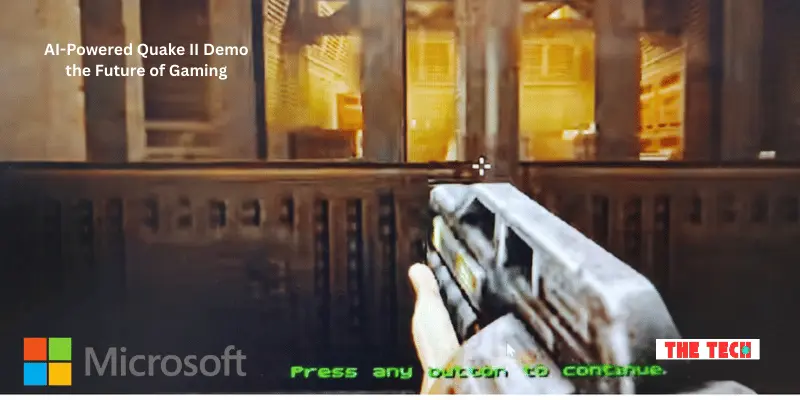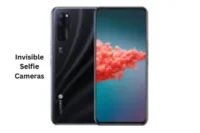Microsoft’s AI-Powered Quake II Demo – A Glimpse into the Future of Gaming
Published: April 9, 2025
Hey there! do you know about Microsoft’s AI-powered Quake II Demo? Microsoft has just released something truly exciting for gamers and technology enthusiasts alike—a new AI-powered demo of the classic game Quake II.
What makes this demo special is that it was created using artificial intelligence (AI), not the usual game development tools.
This means that AI is responsible for generating the game’s visuals, mechanics, and interactive elements in real-time, creating a unique and dynamic experience.
This release is a big deal because it shows how AI can be used to change the way games are made.
Instead of relying on traditional coding and design, AI can learn and create its own gameplay, which opens up new possibilities for the future of gaming.
The demo is available to play directly in your browser, making it easy for anyone with an internet connection to check it out without needing to download or install anything.
This accessibility makes it a great way to experience the future of gaming, right from your computer.
Key Details of the Microsoft’s AI-Powered Quake II Demo

The Quake II demo released by Microsoft is a special version of the classic game, created entirely with the help of artificial intelligence (AI).
Unlike traditional game development, where designers and developers create every element of the game, this demo uses AI to generate the game’s graphics, actions, and interactions as you play.
This means that the game can change and adapt in real time, making each playthrough feel unique.
The AI used in the demo is called Muse, developed by Microsoft.
Muse is an advanced AI model designed to learn from a large amount of game data and create its own content based on that learning.
It’s capable of generating everything from the game’s visuals to its gameplay mechanics.
By using Muse, the demo brings the classic Quake II experience to life, with AI handling much of the heavy lifting behind the scenes.
One of the best things about this demo is how easy it is to access. It’s browser-based, which means you don’t need to download anything or have a powerful gaming PC.
You can simply open the demo in your web browser and start playing right away.
This makes it accessible to anyone with an internet connection, allowing more people to experience this innovative step in gaming technology.
Technical Aspects and Limitations
The Quake II demo powered by AI works by using Microsoft’s Muse AI model to generate the game’s world and gameplay.
Instead of traditional programming, Muse learns from massive amounts of game data and then creates the visuals, actions, and interactions as you play.
It’s like having an AI that can “build” the game on the fly, making each experience feel new and different every time.
However, since this is an experimental tech demo, there are a few things to keep in mind. Because the AI is still in development, you might notice some glitches or imperfections.
For example, the visuals may sometimes look blurry, and the game could experience some lag or stuttering, especially if there are too many things happening on screen at once.
These issues are a result of the demo being in its early stages and not meant to be a fully polished product.
It’s important to remember that this demo is meant to showcase the potential of AI in gaming, not to deliver a perfect gaming experience.
The goal is to demonstrate how AI can change the way games are made and experienced, even if there are still some kinks to work out.
Industry Reactions
The release of Microsoft’s AI-powered Quake II demo has sparked a lot of reactions from both players and experts.
Many players are excited about the potential of AI in gaming, appreciating how it brings something fresh and new to a classic game.
Some players have shared how they enjoyed the idea of AI creating a unique experience each time they played, making the game feel more dynamic and unpredictable.
However, not everyone is fully impressed—some players have pointed out that the demo still has some glitches, like blurry visuals and occasional lag, which can take away from the enjoyment.
Experts in the gaming world have also weighed in on the demo.
John Carmack, co-creator of Quake, praised the demo for its innovative use of AI, saying it was a great example of what AI could potentially do for game development.
However, he also mentioned that while the technology is exciting, it’s still in the early stages and there’s a lot more work to do before it becomes a fully reliable tool for game developers.
Reactions from gaming communities have been mixed.
Many are excited about the new possibilities AI brings to gaming, such as creating more personalized, dynamic worlds and even reviving old games in new ways.
On the other hand, some gamers have expressed concerns, wondering if AI could replace human creativity or lead to games that feel less authentic.
Despite these concerns, the general consensus is that this demo is a huge step forward in showcasing the future potential of AI in the gaming industry.
The Potential Impact on Gaming
The use of AI in the Quake II demo is just the beginning of what could be a huge shift in how games are made.
As AI technology improves, it could change the way game developers create entire worlds, characters, and storylines.
Instead of relying on a team of designers to manually create every aspect of a game, AI could generate many of these elements automatically.
This means games could be made faster and more efficiently, opening up exciting new possibilities for developers.
One of the most exciting things AI could bring to gaming is the creation of AI-generated game worlds.
In the future, players could explore endless, ever-changing environments created by AI, making every playthrough feel different.
For example, AI could generate new levels, quests, and challenges based on how you play the game, offering a truly personalized experience.
AI could also help preserve and reboot classic games.
With AI, it might be possible to recreate older games, like Quake II, in new ways—updating graphics, adding new content, or even making them playable on modern devices without needing the original code.
AI could also breathe new life into old games by generating new worlds or challenges, giving players a fresh way to enjoy them.
Another exciting possibility is that AI-driven games could become much more dynamic and personalized.
As AI learns more about how you play, it could adjust the game’s difficulty, introduce new storylines, or even change the way characters react to you.
This could make games feel more alive and tailored to your unique playstyle, making each experience more immersive and engaging.
Overall, the potential for AI to transform gaming is massive. While we’re still in the early stages, the possibilities are endless, and the future of AI in games looks incredibly exciting.
Final Thoughts
Microsoft’s AI-powered Quake II demo is an exciting step toward the future of gaming.
By using AI to generate the game’s visuals and gameplay, it shows how technology could revolutionize how games are made and played.
While it’s still a work in progress with some glitches, the demo gives us a taste of what’s possible—endless, personalized, and dynamic gaming experiences.
As AI continues to improve, we can expect even more exciting developments in the gaming world, making it a thrilling time for gamers and tech enthusiasts alike.
FAQs
The AI-powered Quake II demo is a version of the classic game Quake II, created using Microsoft’s Muse AI model. Instead of traditional game development, the AI generates the game’s visuals, mechanics, and interactions in real-time, offering a unique experience with each playthrough. It’s a demonstration of how AI can be used in gaming to create dynamic and personalized content.
The demo is browser-based, which means you don’t need to download anything or install special software to play it. You can simply open it in your web browser and start playing immediately, making it easy and accessible for anyone with an internet connection. This makes it convenient for players to experience the AI-powered game without any setup.
The demo uses Microsoft’s Muse AI model, which is designed to learn from a large amount of game data and generate game content based on that learning. Muse helps create the game’s visuals, mechanics, and gameplay as you play, making each session feel fresh and unique. This AI technology demonstrates the potential for AI to play a major role in future game development.
Since this is an experimental tech demo, there are some glitches and limitations. Players might notice blurry visuals, occasional lag, or stuttering during gameplay. These issues are expected in an early-stage demo, as the technology is still being tested and refined for future use in gaming.
This AI-powered demo opens up exciting possibilities for the future of game development. AI could allow developers to create dynamic, personalized game worlds that adapt to players’ actions. It also has the potential to preserve and reboot classic games, making them more accessible and immersive for new generations of players.
Bonus Info Points
- No Installation Needed: The demo runs directly in your browser—just click and play without downloading anything.
- Powered by Muse AI: Microsoft’s advanced Muse AI model is behind the game, showing how smart technology can recreate classic gameplay.
- A Step Toward AI-Generated Worlds: This demo hints at a future where entire game environments and stories could be built by AI in real-time.
- Inspired by Gaming Legends: Industry experts like John Carmack have praised the project for its innovation, even while recognizing its early-stage flaws.
- Classic Meets Future: It blends the nostalgic feel of Quake II with modern AI technology—perfect for both retro fans and tech enthusiasts.
- Works on Most Devices: Since it’s browser-based, you can try it on different platforms including laptops and some mobile devices.

- Be Respectful
- Stay Relevant
- Stay Positive
- True Feedback
- Encourage Discussion
- Avoid Spamming
- No Fake News
- Don't Copy-Paste
- No Personal Attacks



- Be Respectful
- Stay Relevant
- Stay Positive
- True Feedback
- Encourage Discussion
- Avoid Spamming
- No Fake News
- Don't Copy-Paste
- No Personal Attacks





